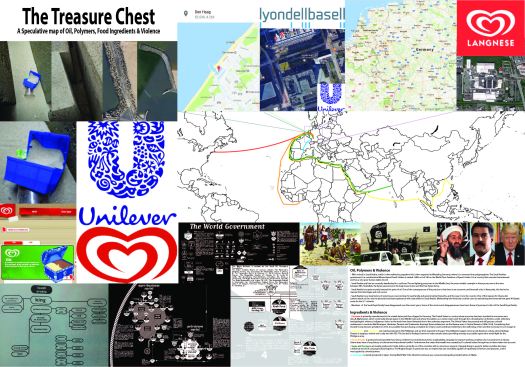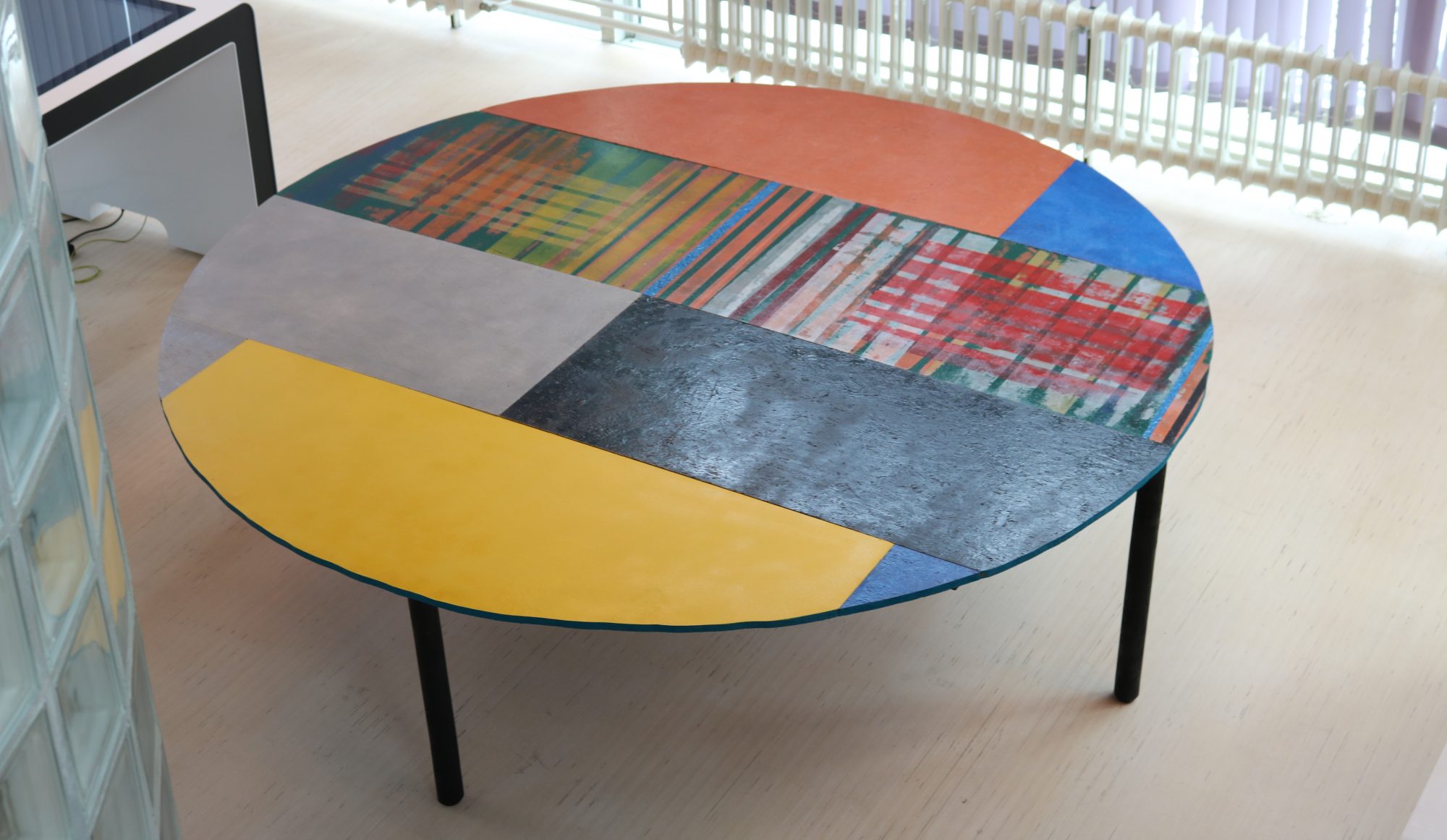 Visual Agrilogistic Violence
Visual Agrilogistic Violence
Agrilogistic (Agricultural logistics) violence remains a relatively unseen phenomenon within a Dark Ecology. Agrilogistic violence is a structural slow violence which damages objects and living species by the distribution of polymer products through an unrestricted and ungoverned free market. The polymer products are derived from crude oil which has been greatly prized by modern culture and has often been obtained in violent means. In order to address this issue, Agrilogistic violence needs to become a visual phenomenon.
To do this I will create a series of maps by researching objects such as an OLA (Unilever) schatkist and through the means of iteration create a series of counter-cartographic maps which seek to visualise and address the issue of Agrilogistic violence which originates and are mainly transported through the Silk Roads. The main emphasis of this project will be to seek the means of stimulating a public discussion about such matters and providing human consumers the input and means to address the issue of Agrilogistic violence in our violent geography.
The main task of this project is to provide an accurate and as-empirical-as-possible collection of maps which are framed in a comprehensive narrative. The maps are there to stimulate consumers and citizens to act differently and to address direct and indirect Agrilogistic violence in society. The maps will provide a simple yet rigorously based narrative, which most people will be able to comprehend. These maps could be created in different media, both digital and analogue and could be placed on the internet.
In order to do this, I will take a forensic approach to a found object (an OLA/Unilever schatkist) and use mapping of digital, scientific, historical, artistic and scholarly data. This should provide an oversight of the complexity of globalised Agrilogistic violence, including the powers and hierarchies at hand. The narrative provided with these maps shall provoke concern amongst users and consumers in this system, which will hopefully lead to a meaningful (activist) stance towards these damaging systems.
In addition to this I will refine and explore target groups, but this shall remain a project for in the public domain. This is a project that attempts to stimulate people to address structural Agrilogistic violence which takes place in and via seemingly peaceful (liberal) democracies.
Bibliography:
- Morton, Timothy. Dark Ecology. For a logic of future coexistence. New York: Columbia University Press, Print. The Wellek Library Lectures.
- Yergin, Daniel. The Prize: The Epic Quest for Oil, Money & Power. New York: Free Press; Reissue edition (December 23, 2008)
- Weizman, Eyal. Forensic Architecture: Violence at the threshold of detectability. New York: Zone Books 2017
- Frankopan, Peter. The Silk Roads; A New History , Bloomsbury publishing. 2016 2nd Edition
- Doel, Marcus A. Geographies of Violence, London: Sage publication ltd. 2017 Print. Society and Space series.
- Bureau D’Études, An Atlas of Agendas, Mapping the powers, mapping the commons, Paris: Onnamatopee 2015. Print
Initial Map:

The current main map:

The Treasure Chest; A speculative map of Oil, Polymers, Food ingredients & Violence
Detail map of Saudi Arabia:
Will follow shortly…
Detail map of United States of America:

Detail Map of Netherlands:
Will follow shortly…
Detail map of India:

The map is still in development and will likely be a digital design/ digital media in it’s final form.
The map was tested with participants in a minor Ethnographic strand of my research with participants from different parts of Dutch society, countries and cultures.
The presentation of the map at the end of term:

The accompanying process book can provide you with further insight in my process.
Procesbook Nikki Vieler 0840880
Currently the research has moved on…
2017


